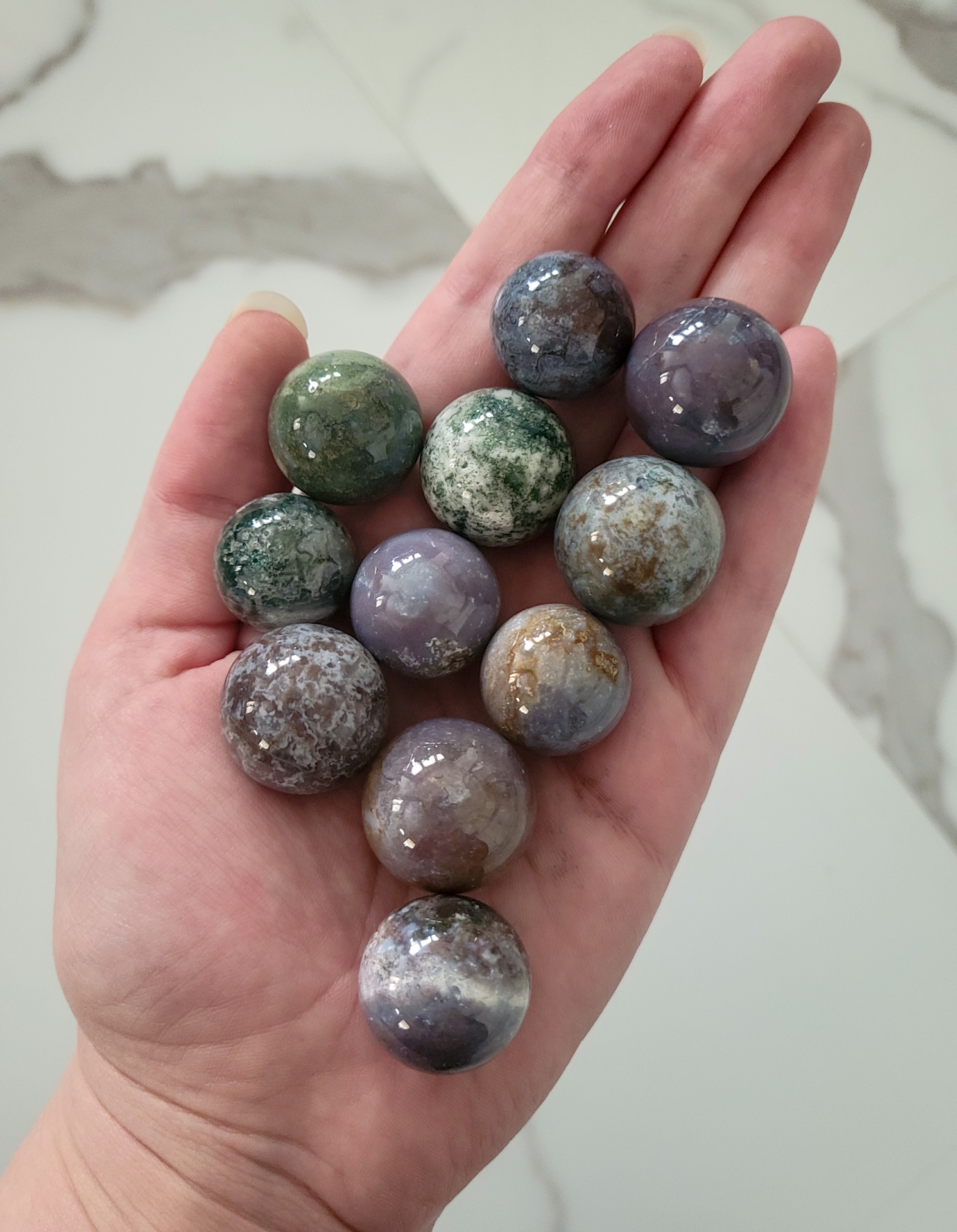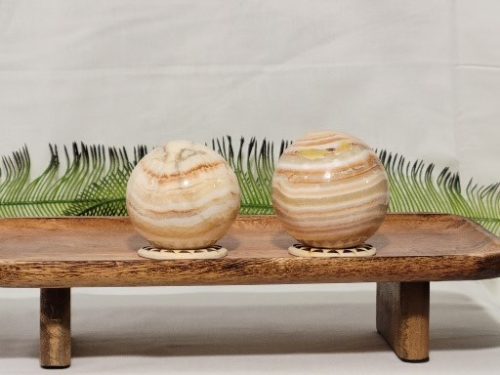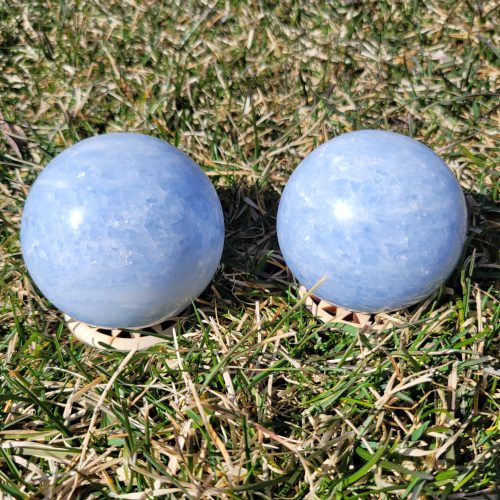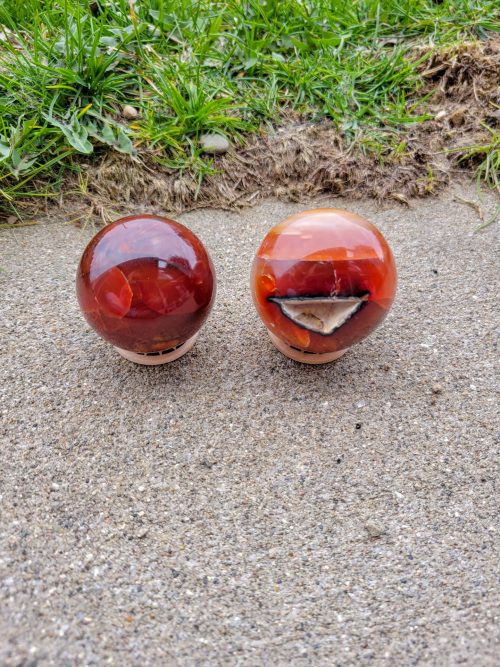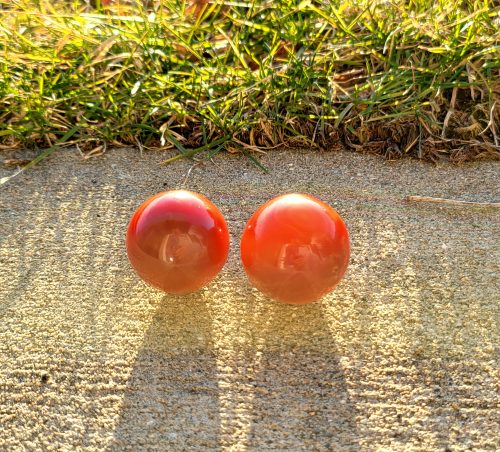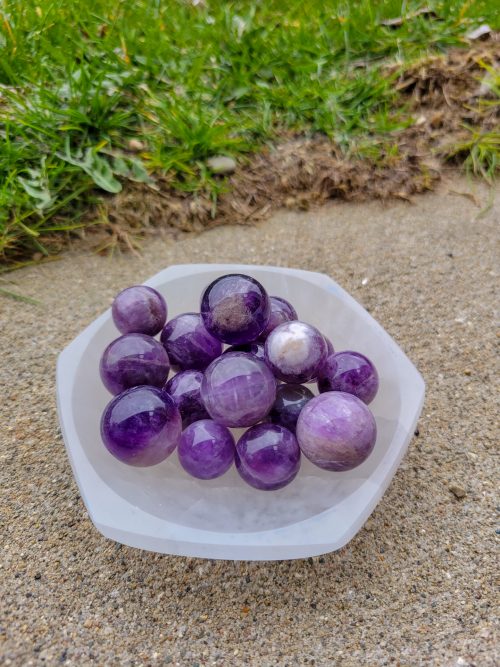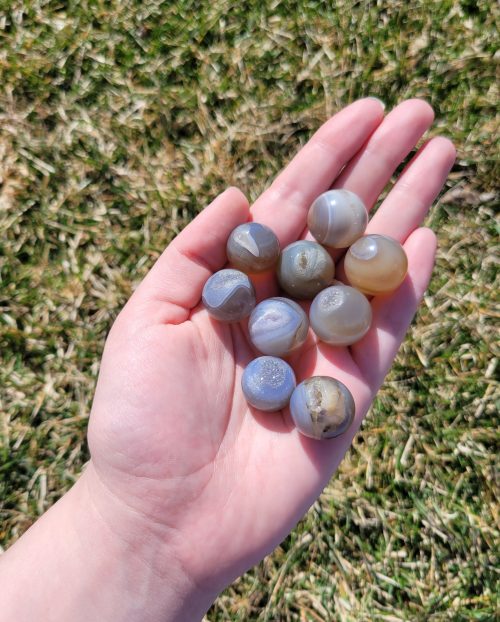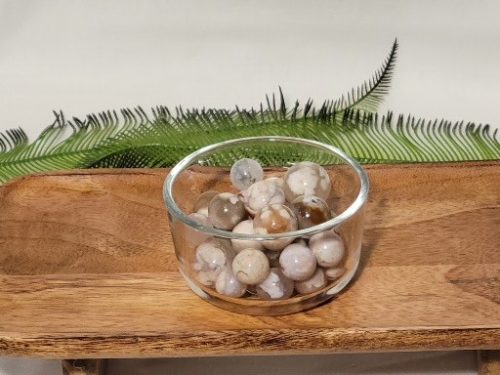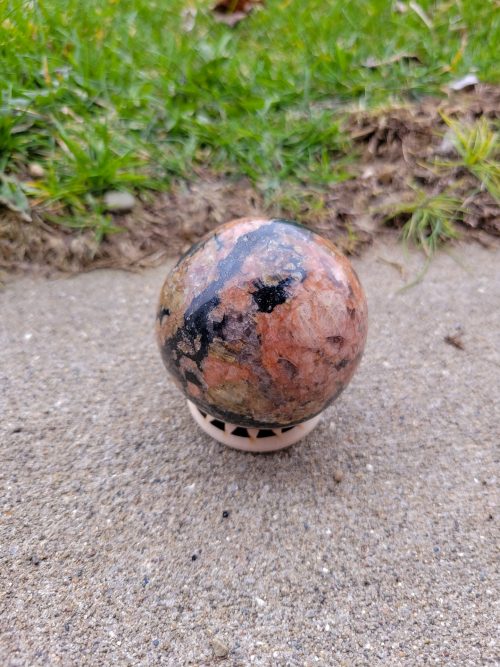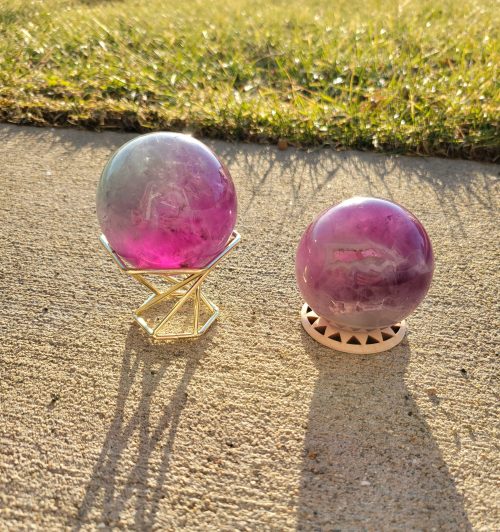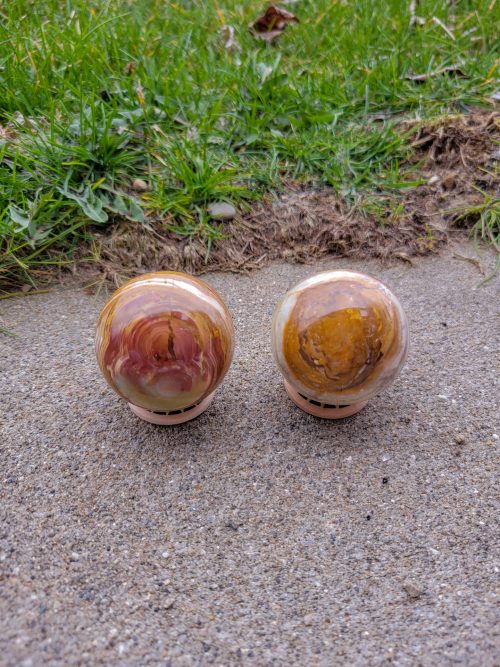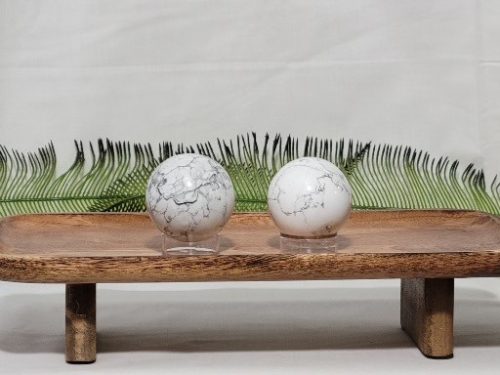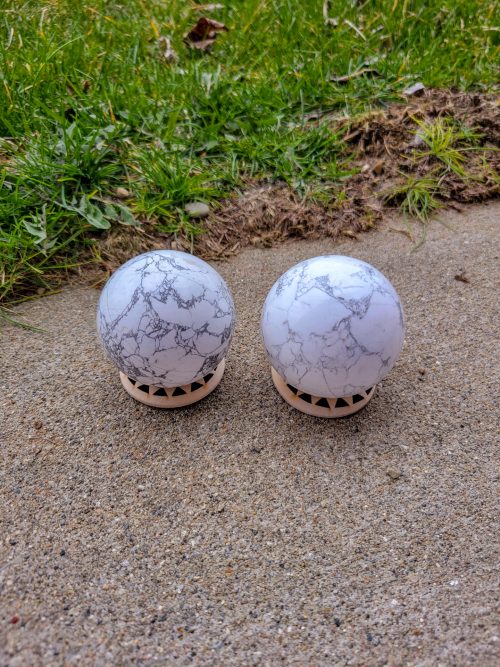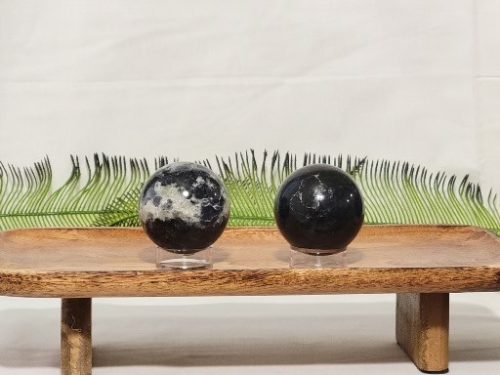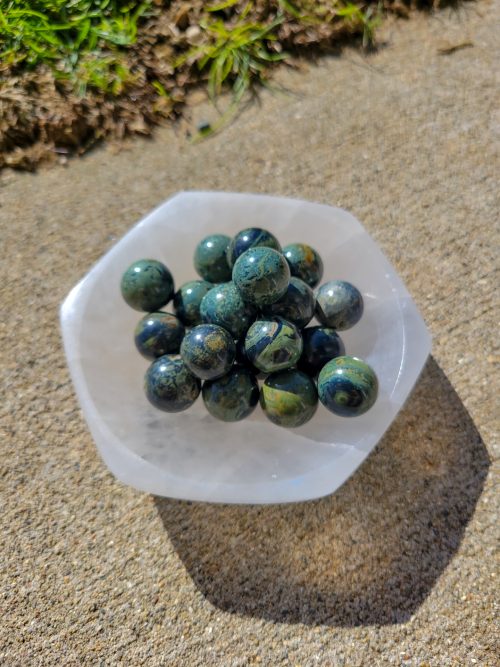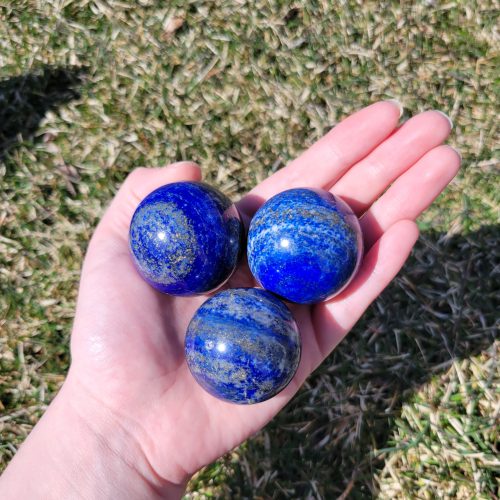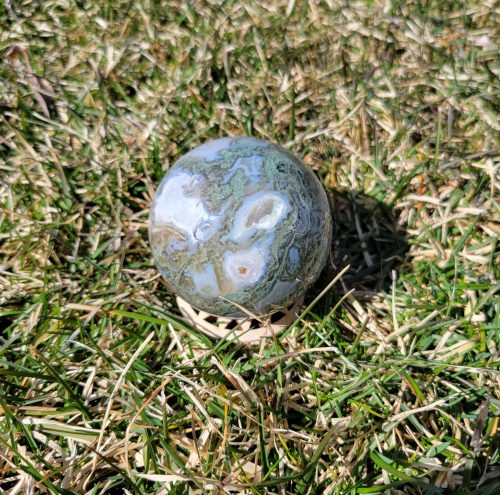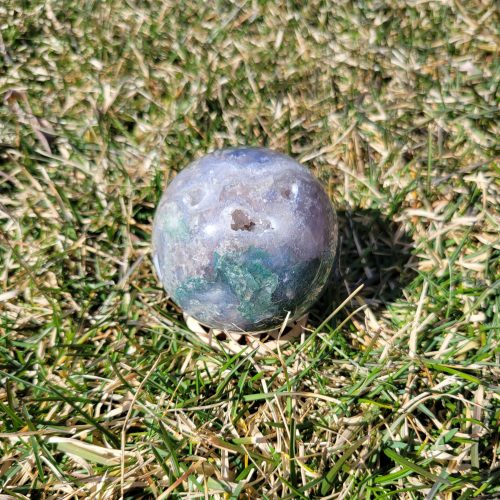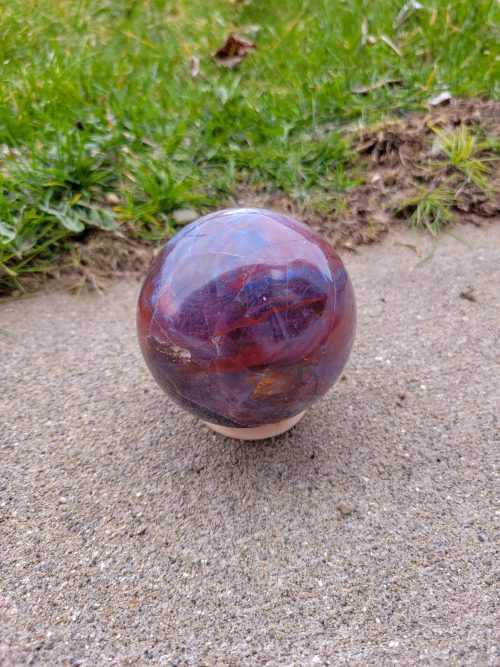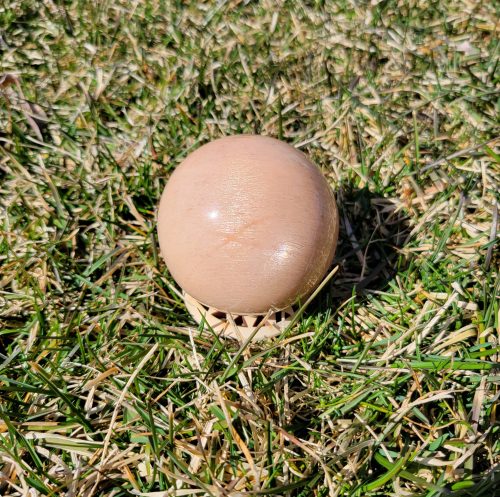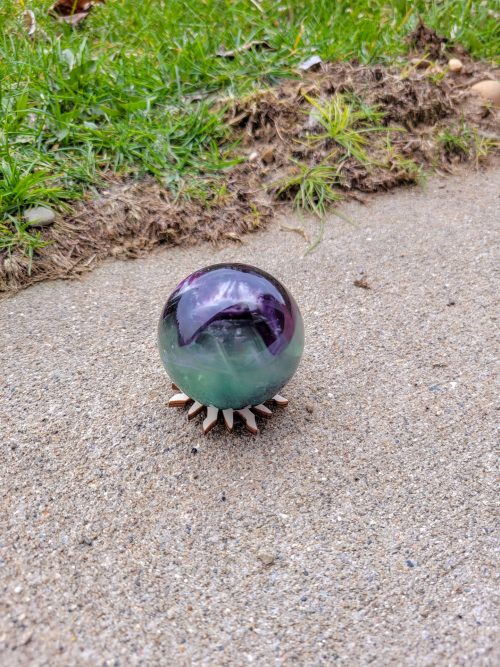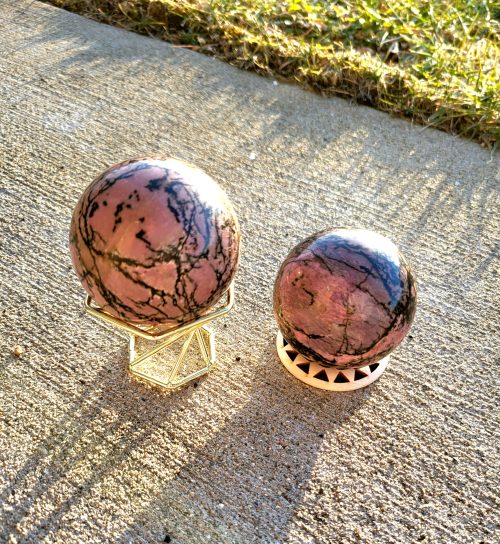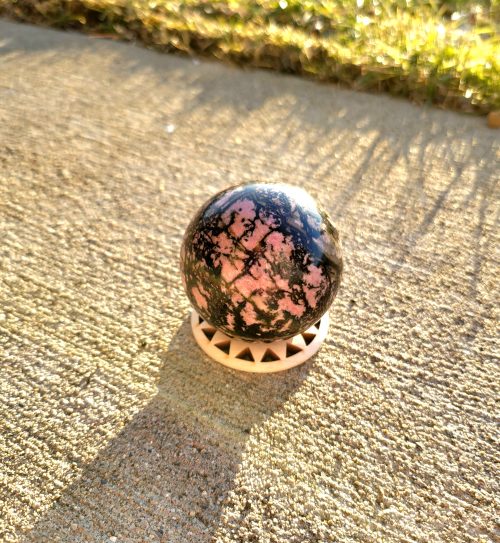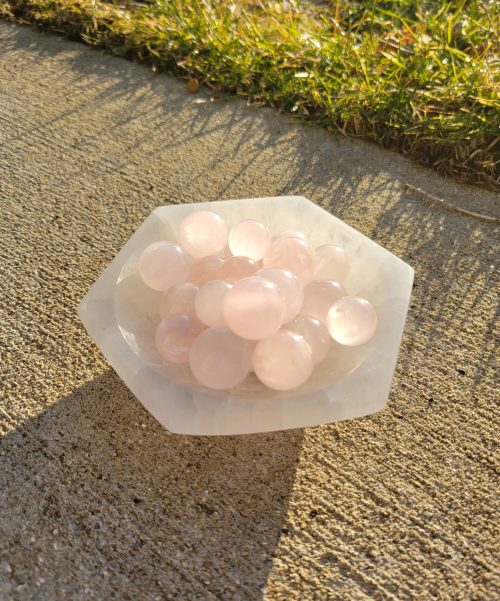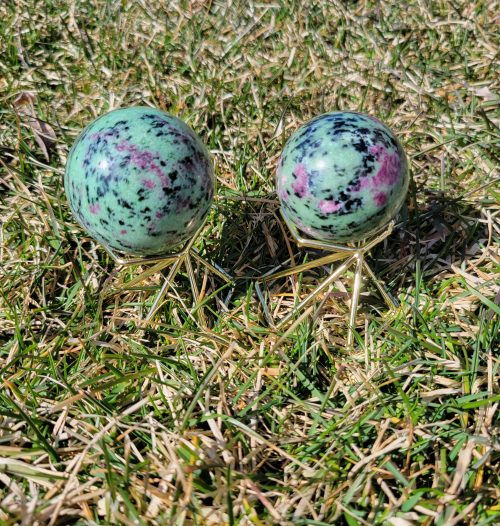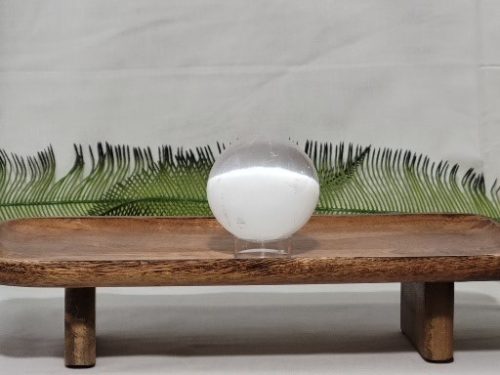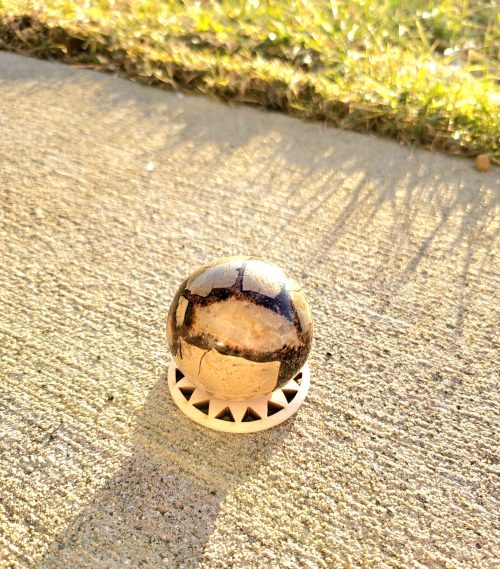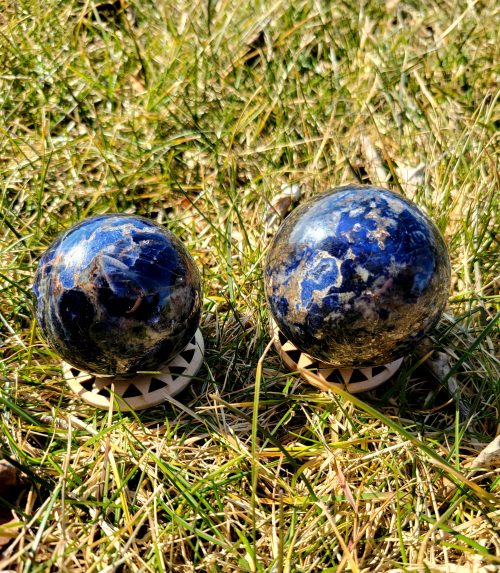-
3 x 1 x 3cm Ocean jasper is a rare and colorful material exclusively from Madagascar. It is described as a variety of Orbicular Jasper due to its orb-like inclusions. Ocean jasper is a name for what is known to be a spherulitic chalcedony which is a cryptocrystalline variety of quartz. Cryptocrystalline is a term that means its crystals are too small to be seen with the naked eye. ***Due to natural variations in stones, appearance will vary***
-
60mm - 70mm Calcite is a mineral when originally formed is colorless and opaque and can come in many different forms of translucency. It gets its beautiful colors and banding from impurities in the rocks the specimen is formed in. Calcite gets its name from the water within the mineral being rich in calcium. This soft mineral can be found all over the world; mainly in shallow marine settings such as hydrothermal veins and hot spring deposits. Many marine life species, such as crabs and coral, rely on calcite to form their shells. ***Due to natural variations in stones, the appearance will vary***
-
65mm Calcite is a rock-forming mineral that is found throughout the world in sedimentary, metamorphic, and igneous rocks. The blue color comes from the calcium carbonate inclusions within this mineral. Blue calcite can be found in many places around the world but mostly in Mexico, The United States, Britain, and Iceland. ***Due to natural variations in stones, appearance will vary***
-
45mm - 50mm Carnelian is a part of the Chalcedony family. It is formed when two silica minerals with different crystal structures grow together such as quartz and moganite. The firey orange and red colors come from iron oxides in the mineral. Carnelian can be found in Brazil, India, and Uruguay. ***Due to natural variations in stones, the appearance will vary***
-
30mm Carnelian is a part of the Chalcedony family. It is formed when two silica minerals with different crystal structures grow together such as quartz and moganite. The firey orange and red colors come from iron oxides in the mineral. Carnelian can be found in Brazil, India, and Uruguay. ***Due to natural variations in stones, the appearance will vary***
-
Dream amethyst (also known as Chevron Amethyst) is a natural mineral formed when amethyst and white quartz fuse together while cooling down off after a volcanic eruption. The amethyst that fuses to the white quartz creates the chevron-like shapes in the crystals. The main areas Dream Amethyst can be found is Brazil, Namibia, and Morocco. ***Due to natural variations in stones, the appearance will vary***
-
20mm Agate is a translucent form of microcrystalline quartz. These crystals form inside of igneous rocks over a long period of time and get their banding from years of siliceous groundwater building up in the cavities of these rocks. What makes this mineral so beautiful and unique is that the color variations and banding patterns are completely dependent on the environmental factors around them. Agate can be found here in the USA; mostly in the northwest. ***Due to natural variations in stones, the appearance will vary***
-
20mm Flower agate gets its name from the flower-like formations within the crystal's body. These crystals are volcanic rocks that are mainly composed of chalcedony and quartz. These crystals can vary in color; from pink to a dark grey/purple. Recently discovered in Madagascar, these crystals are believed to go back to 2000 BC. ***Due to natural variations in stones, the appearance will vary***
-
65mm Jasper is an opaque and impure variety of silicon dioxide. The name 'jasper' originates from the Greek word for 'spotted stone' which refers to its typical multi-colored, striped, spotted or flamed appearance. Jasper can come in just about any color depending on the sediments of the original mineral. This mineral is mostly found in India, Russia, Egypt, Madagascar, and Australia. ***Due to natural variations in stones, the appearance will vary***
-
60mm Fluorite is composed of fluorine and calcium and is formed in hydrothermal veins in the Earth's crust. This mineral can be found in all colors of the rainbow with different hues. The different colors in Fluorite are caused by impurities within the mineral. The deeper colors are found in well-formed crystals. Fluorite was originally discovered in Illinois in 1842 but is no longer mined in the US. It can be found in China, South Africa, Mongolia, France, and Russia. ***Due to natural variations in stones, the appearance will vary***
-
45mm Onyx is a banded variety of the oxide mineral chalcedony. Onyx and Agate are similar in that they are both varieties of layered chalcedony. The difference between the two is that agate has curved banding and onyx has parallel banding. The colors of the banding range from virtually every color possibility. Green Onyx is mainly found in Brazil, India, Madagascar, Mexico, Peru, and USA ***Due to natural variations in stones, appearance will vary***
-
40-50mm Howlite was originally discovered in Canada by a geologist named Henry How which is where its name comes from. Howlite is formed in evaporate deposits with other borate and evaporate minerals. The outside of the mineral is not pleasant to the eye and is said to look like a head of cauliflower. However, when that is taken off, this beautiful mineral is found inside! This mineral is mainly found in Canada and the USA. ***Due to natural variations in stones, the appearance will vary***
-
60mm Howlite was originally discovered in Canada by a geologist named Henry How which is where its name comes from. Howlite is formed in evaporate deposits with other borate and evaporate minerals. The outside of the mineral is not pleasant to the eye and is said to look like a head of cauliflower. However, when that is taken off, this beautiful mineral is found inside! This mineral is mainly found in Canada and the USA. ***Due to natural variations in stones, the appearance will vary***
-
40mm - 50mm Iolite is a magnesium iron aluminum cyclosilicate mineral formed in metamorphic rocks underground. High pressure and temperature mixed with high amounts of magnesium is how this mineral gets its dark violet color. This mineral, when cut and polished, is gemstone material and is transparent. Many countries use this in jewelry as opposed to Sapphire and Tanzanite. ***Due to natural variations in stones, the appearance will vary***
-
15mm Also known as Crocodile Jasper, Kambaba Jasper is a sedimentary Fossilized Stromatolite Algae. Greenish or blackish orbs of petrified algae with mostly black centers make this stone very different from other jaspers. The name “crocodile jasper” refers to the stone’s resemblance to Crocodile eyes. It is a very old stone dating back about 3 billion years and is found in South Africa and Madagascar. ***Due to natural variations in stones, appearance will vary***
-
45mm Lapis lazuli forms near igneous interferances where limestone or marble has been altered by contact metamorphism or hydrothermal metamorphism. In these rocks, lazurite replaces portions of the host rock and often develops within certain bands or layers which can include other minerals such as pyrite and white calcite. Lapis Lazuli is mostly found in Afghanistan but can also be found in Chile, Russia, Canada, Argentina, Pakistan, and the US. Within the US, these stones can be found in Colorado, California, and Arizona. ***Due to natural variations in stones, appearance will vary***
-
60mm Wide Moss agate is a semi-precious stone. It is a variety of Chalcedony and it formed from silicon dioxide. The field of this stone is a milky white or clear quartz with blue and green inclusions that form as a result of oxides in the mineral. The dendritic inclusions are mainly made from manganese or iron that grow into patterns to give it the moss look. ***Due to natural variations in stones, the appearance will vary***
-
65mm Wide Moss agate is a semi-precious stone. It is a variety of Chalcedony and it formed from silicon dioxide. The field of this stone is a milky white or clear quartz with blue and green inclusions that form as a result of oxides in the mineral. The dendritic inclusions are mainly made from manganese or iron that grow into patterns to give it the moss look. ***Due to natural variations in stones, the appearance will vary***
-
80mm Ocean jasper is a rare and colorful material exclusively from Madagascar. It is described as a variety of Orbicular Jasper due to its orb-like inclusions. Ocean jasper is a name for what is known to be a spherulitic chalcedony which is a cryptocrystalline variety of quartz. Cryptocrystalline is a term that means its crystals are too small to be seen with the naked eye. ***Due to natural variations in stones, appearance will vary***
-
60mm Moonstone is a potassium aluminum silicate feldspar. The peach variety ranges from a tan brown to a very light peach/pink. This range in color is caused by higher contents of aluminum within the feldspar’s chemical make-up. Most of Peach Moonstone comes from Madagascar, with a majority of the material being crafted by the local craftsmen/women. ***Due to natural variations in stones, appearance will vary***
-
50mm Fluorite is composed of fluorine and calcium and is formed in hydrothermal veins in the Earth's crust. This mineral can be found in all colors of the rainbow with different hues. The different colors in Fluorite are caused by impurities within the mineral. The deeper colors are found in well-formed crystals. Fluorite was originally discovered in Illinois in 1842 but is no longer mined in the US. It can be found in China, South Africa, Mongolia, France, and Russia. ***Due to natural variations in stones, the appearance will vary***
-
60mm Rhodonite is a silicate mineral usually found in metamorphic rocks that are known to have other manganese minerals in them. The manganese is how Rhodonite gets its color. These beautiful minerals can be found in Argentina, Australia, Brazil, Canada, and many other places. ***Due to natural variations in stones, the appearance will vary***
-
55mm Rhodonite is a silicate mineral usually found in metamorphic rocks that are known to have other manganese minerals in them. The manganese is how Rhodonite gets its color. These beautiful minerals can be found in Argentina, Australia, Brazil, Canada, and many other places. ***Due to natural variations in stones, the appearance will vary***
-
20mm Rose Quartz is an anhedral crystal. It is found in the cores of pegmatites and gets its color from microscopic inclusions of a pink variety of the mineral dumortierite . Rose Quartz is naturally a pink hue but can have more hues of grey/purple or red. This mineral Earth's can be found in many places including South Africa, Madagascar, and Brazil. ***Due to natural variations in stones, the appearance will vary***
-
45mm Zoisite is a mineral that forms during the metamorphism and hydrothermal alteration of igneous, metamorphic, and sedimentary rocks. Anyolite is a very colorful rock composed mainly of zoisite. It is also known as "ruby in zoisite" because it is composed of green zoisite with bright red ruby. Rubies are corundum gems that are predominately red. The color can range from orangish red to purplish red. The most desirable color range is a pure vibrant red to a slightly purplish red. Ruby in Zoisite was discovered and is still only found in Tanzania ***Due to natural variations in stones, appearance will vary***
-
50mm - 60mm Selenite-also known as Satin Spar- is a chemical sedimentary mineral. Unlike carbonate rocks and siliceous rocks, this mineral comes from seawater that evaporates and leaves the chemical found in selenite behind. This beautiful mineral has a pearly, satin-like appearance and is a very soft mineral. These minerals can be found in Mexico, Brazil, Japan, and many other countries! ***Due to natural variations in stones, the appearance will vary***
-
55mm Septarian concretions are concretions containing cavities or cracks, called septaria. The septaria are the calcite (yellow) filled cracks at the center of the rock, indicating where the center of the concretions have shrunk, possibly during dehydration during its transformative journey over a long period of time. Septarian can be found mostly in the Gulf of Mexico and Madagascar. ***Due to natural variations in stones, appearance will vary***
-
45mm Septarian concretions are concretions containing cavities or cracks, called septaria. The septaria are the calcite (yellow) filled cracks at the center of the rock, indicating where the center of the concretions have shrunk, possibly during dehydration during its transformative journey over a long period of time. Septarian can be found mostly in the Gulf of Mexico and Madagascar. ***Due to natural variations in stones, appearance will vary***
-
60mm Sodalite is a rare mineral formed inside igneous rocks crystalized as a result of sodium-rich magma. The blue color comes from the rock that Sodalite is formed in; nepheline syenite, trachyte, and phonolite. Although the sodalite-bearing rock is rare, it can most commonly be found in the US, Canada, and Africa. ***Due to natural variations in stones, the appearance will vary***

